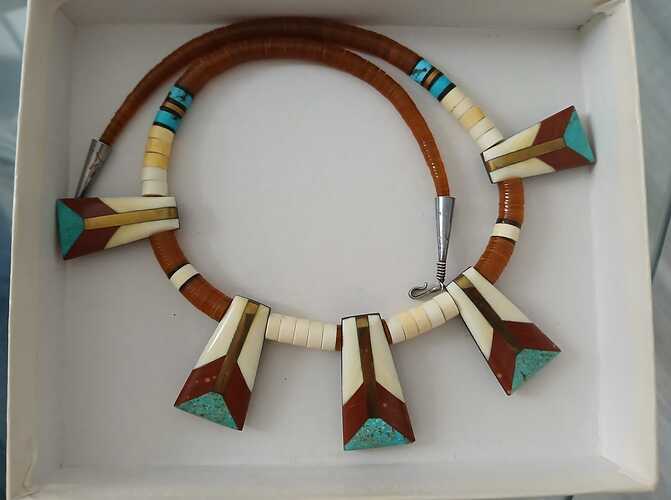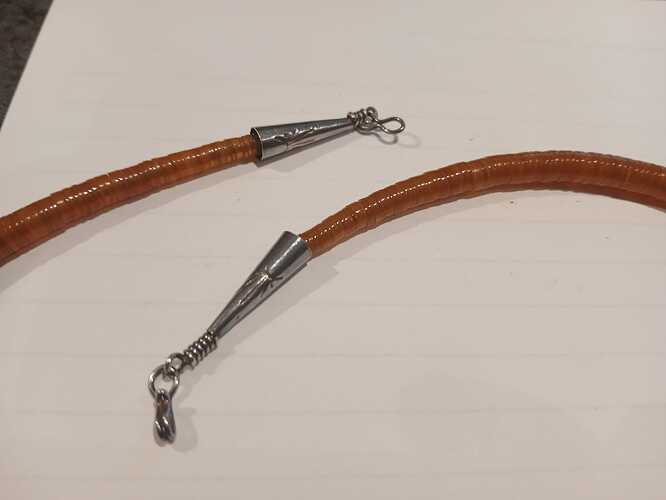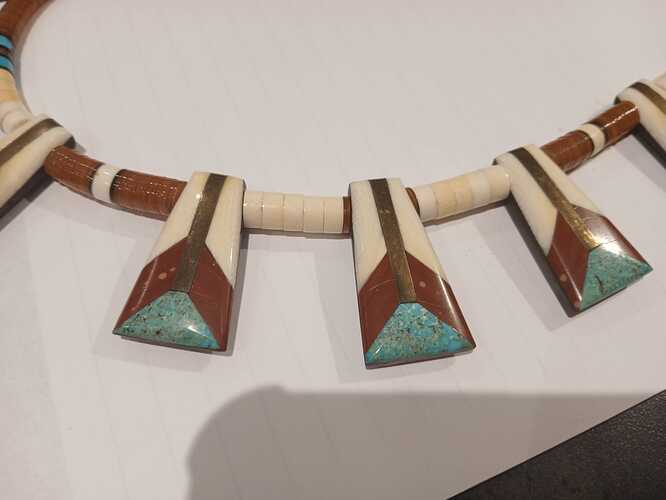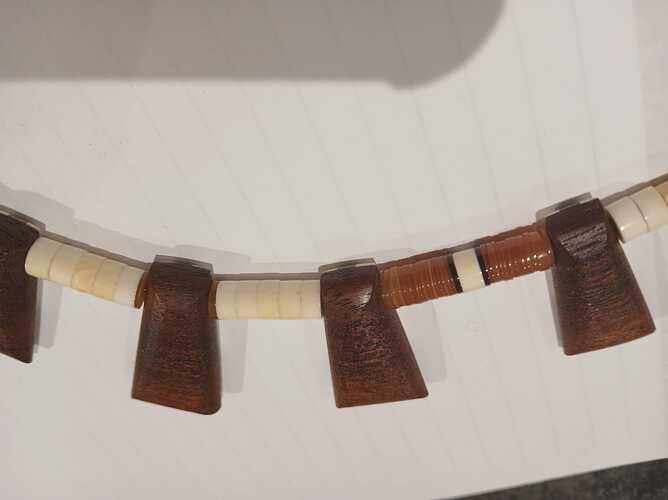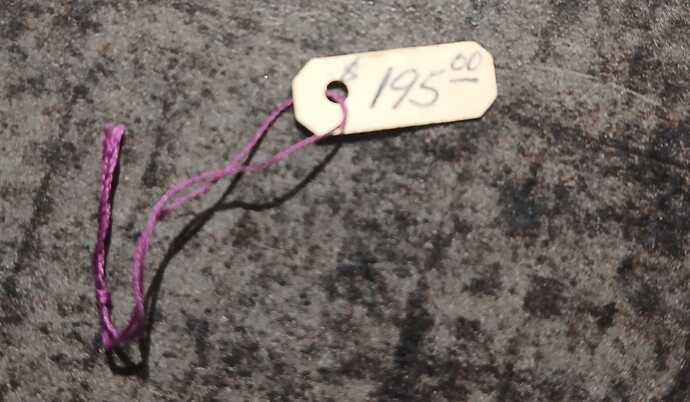Hello,
I found this necklace in a charity shop in the UK. It seems to come from the 4 corners region. By looking online it could be Santo Domingo or Kewa?
I am quite curious if someone has details to share on the origin and if real ![]() There is a rising sun on the cones
There is a rising sun on the cones
It’s possible it’s Kewa (Santo Domingo), but I’m not as confident with their pieces, because there are a lot of oversea imitations. The turquoise looks real as versus block, but it’s a little hard to tell from the photo, and I’m not completely sure if the other materials are genuine. I believe that’s brass down the middle of the tabs? Could you show us the entire clasp and cones (I can’t see one of the pieces completely)? Also the marks on the cones are possibly standard marks from the supply company as versus an artist’s hallmark, but being able to see them would be helpful.
There are other members here with more experience with Kewa items then I have; hopefully they’ll jump in.
Welcome to Turquoise People!
Many thanks for your help ![]() I just added some more photos, hope this helps.
I just added some more photos, hope this helps.
Yes I was a bit puzzled by the brass and the wood. I only have Zuni jewels, so not used to the Kewa style.
They do help, thank you. I see the wood is on the back of the tabs. I’m still undecided on this, but it’s very pretty. The clasp looks right, and I know that sometimes Kewa necklaces can have brass, but the wood gives me pause. I can’t tell what the white material is. The red in the tabs reminds me of pipestone, but it looks different used in the heishi, so ![]()
I believe the cone marks are just standard supply store cone marks, such as from Thunderbird Supply Company, which is not unusual (I have a Navajo necklace with them). I linked this article not because I necessarily think yours is an import - I really don’t know, but because it shows how difficult this style of neck jewelry is to authenticate. Did you get any information from the seller?
Thank you, very interesting article indeed, really appreciate the help! I found it in a thrift shop, so it had been given away. There was just a vintage tag in the box displaying “$195” so I feel sorry for the original owner if it was fake and they paid this price!
Anyway I think it is lovely so I am very happy to welcome it in my little collection ![]()
You are welcome. And I don’t know that it’s a fake, I just know that my knowledge is not deep enough to say for sure ![]() I’m really hoping some of the others on here that are more knowledgeable about Kewa necklaces will jump in. I have quite a few of them, but I bought them all from the artists, and they look very from different than this; I only have one tab necklace, and it’s a depression era type necklace. And I agree, whatever the case, yours is really pretty.
I’m really hoping some of the others on here that are more knowledgeable about Kewa necklaces will jump in. I have quite a few of them, but I bought them all from the artists, and they look very from different than this; I only have one tab necklace, and it’s a depression era type necklace. And I agree, whatever the case, yours is really pretty.
Out of curiosity, did the tag just have the price, or did it possibly have a store name? And you may know this, but Santo Domingo is the former name of Kewa Pueblo. They chose to go back to their original name instead of keeping the Spanish one.
I know little about these type of necklaces, but to me it seems that quite a bit of thought and care went into making it. I believe that the ‘collage’ technique of the larger stones is called (stone) intarsia. I’ve tried cutting stones with that technique and it takes quite a bit of work to get it right. Also the fact that the smaller heishi beads are graduated in size is a good sign i think.
Imo it’s a beautiful necklace, whether authentic or not and it would make my day if i would find something similar while thrifting.
